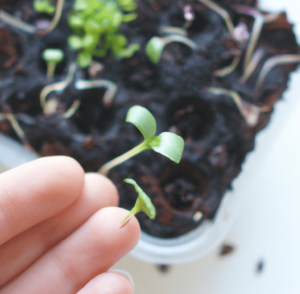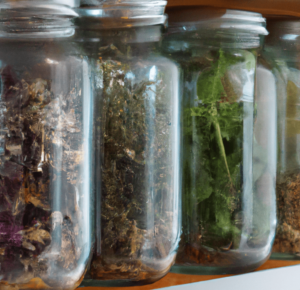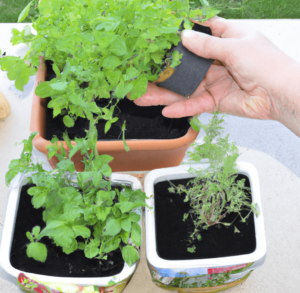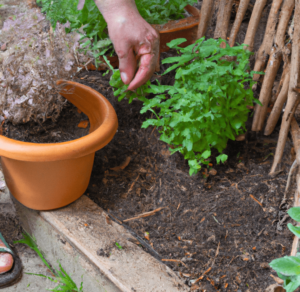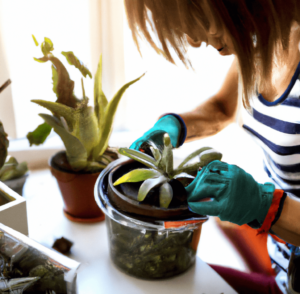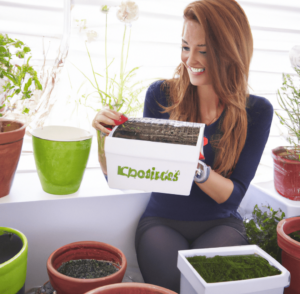Your outdoor spaces can be given life and color through gardening. You may have heard of a biennial plant but do you know how to grow annuals and perennials? Growing annuals and perennials can be a terrific way to create a lively and diversified garden, regardless of your level of gardening experience. Here’s our guide to these types of plants!
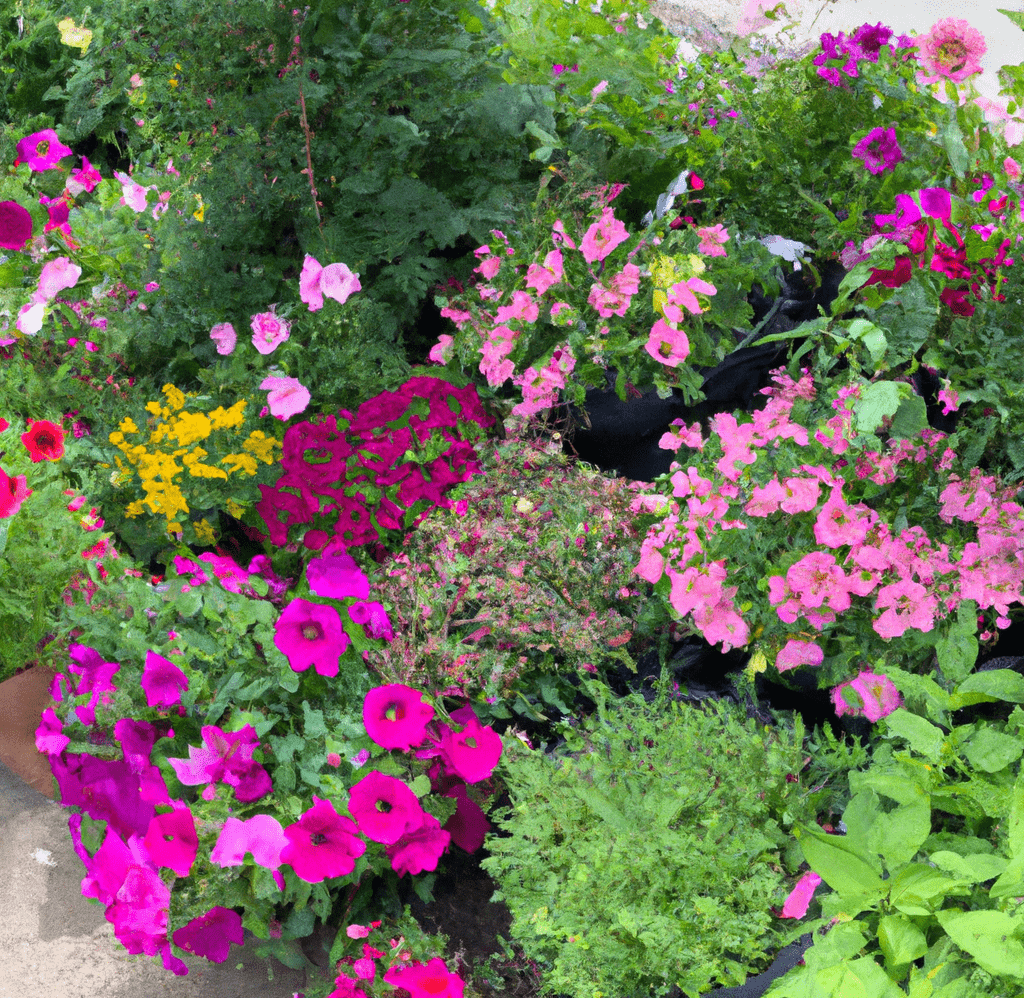
Preparing to Plant
The first step in learning how to grow annuals and perennials is preparation. Both perennials and annuals can provide a splash of color and interest to a garden, but they each have certain requirements and bloom at different times of the year:
- First, choose plants based on their needs for growth and the local climate. The quantity of sunlight and moisture your garden receives, as well as the time of year you want your plants to blossom, are important considerations. Not all plants will thrive in the summer while others only live through autumn.
- Next, it’s crucial to get the soil ready by making sure it has a balanced amount of nutrients and is well-drained. Compost or other organic matter can be added to the soil to enhance its structure and fertility and provide your plants with the best possible growing conditions.
- Finally, consider the changing of the seasons and plants when the weather is pleasant and the soil is moist. Others grow better when planted in the fall, while some species like to be planted in the spring.
Choosing the Right Annuals and Perennials for Your Climate and Location
Whether you’re growing flowers from cuttings or choosing a houseplant seed, it’s vital to choose plants that are appropriate for your temperature and location because different plants have varying needs for soil, water, and sunlight. Keep these tips in mind:
- Growing annuals have the advantage that they can be planted anywhere as long as the environment and climate are conducive to their growth. Petunias, marigolds, and zinnias are a few common annuals that do well in sunny, warm settings since they are heat-loving plants.
- Perennials are typically more resilient and can endure a variety of environments. Nevertheless, choosing perennials suitable to your region is still crucial. For instance, if you live in a cold location, you might want to consider perennials like Black-eyed Susan or Coreopsis which are hardy and can withstand freezing conditions.
- It’s crucial to take into account your garden’s exposure to light and shade, as well as the type of soil you have while choosing plants for it. While some plants prefer more shade to grow well, others need full light.
- Also, check that the soil in your garden has the proper nutrients and pH levels to support the growth of your plants. It should also be well-draining.
- Pick a spot in your garden with the ideal soil for your plants. While some plants like soil that drains well, others do well in moister soil. Consider using raised beds or containers for your plants if your soil is heavy or poorly draining since they will offer better-growing conditions.
- When planting annuals, it can be beneficial to select a spot close to other plants that will contrast and compliment your annuals, assisting in the creation of a unified and beautiful garden.
Preparing the Soil
As you learn how to grow annuals and perennials from this gardening guide, here’s how to prepare soil:
- Remove any weeds, rocks, or other debris that may be present before beginning to prepare the soil. The soil should next be amended with compost, peat moss, or other organic material to increase its fertility and structure. This will guarantee that your plants have access to the nutrients they require to develop sturdy roots and vivacious blossoms.
- It’s crucial to comprehend your soil’s pH level and make the necessary adjustments. Although most plants prefer a neutral soil pH between 6.5 and 7.0, some may need more acidic or alkaline soil to flourish. You may better understand the requirements of your soil and make the appropriate adjustments with the aid of a soil test.
Planting
The next step in gardening and how to grow annuals and perennials is the actual planting.
Proper Spacing
The right amount of space between your plants not only encourages them to develop and bloom to their potential but also keeps your garden looking tidy. Generally speaking, it’s ideal to adhere to the recommendations on the seed packet or plant label as this will provide you with a clear understanding of how much space each type of plant needs. The right spacing can help you get the most out of your gardening efforts, whether you are planting seeds, seedlings, or mature plants.
Depth for Planting
The size of the plant and the growing season should determine the depth of the planting hole:
- Perennials and annuals must be planted at the same depth at which they were started from seed or in a container. The health and growth of the plants might be impacted by shallow or deep planting.
- The root collar and the top of the root ball should be level with the soil’s surface.
- The proper amount of water and nutrients must be provided to the plants during the growing season, and the planting depth might have an impact on this.
- Plants that are planted shallowly may have dry soil and be undernourished, whereas plants that are planted deeply may have wet roots.
Watering and Care Instructions
Knowing about how to grow annuals and perennials means knowing how to water and take care of them:
- Keep the soil continually moist for annuals, but not soggy, to keep the plants from getting stressed and stunted.
- You might need to water your annuals more regularly during hot, dry spells to maintain moist soil and promote blooms.
- Perennials often have more developed root systems and are more drought-tolerant than annuals. However, it’s still crucial to give your perennials enough water to maintain their health and encourage vigorous growth and flowers.
- Understanding your plants’ demands can help you make the necessary adjustments to the soil’s alkalinity and acidity levels.
- Pruning aids in shaping the plant and maintaining its clean appearance by removing dead or damaged growth.
- Monitor your plants regularly and take steps to prevent and control pests and diseases, to help ensure that your plants will stay healthy and beautiful throughout the growing season.
Fertilizing
Fertilizing is another step you need to learn about in how to grow annuals and perennials because using the right fertilizer will help them grow and blossom more effectively. During the growing season, it is generally advised to fertilize your plants every 4 to 6 weeks. Consider the unique requirements of your plants when choosing a fertilizer, and select one that is designed for the type of garden you have. For the greatest outcomes, make sure you also adhere to the label’s directions.
Deadheading
Deadheading or pruning is an essential skill to learn as you figure out how to grow annuals and perennials:
- You may encourage plants to create more buds and bloom more profusely throughout the season by removing spent blooms.
- Deadheading is less important for perennials, but some species can still benefit from it. By getting rid of wasted blooms, you can keep the plant looking healthy and attractive overall and you can stimulate the plant to produce more blooms later on in the growing season.
- It’s crucial to get rid of the completely wasted flower while deadheading your plants, including the stem, leaves, and any potential seed pods. This encourages the plant to concentrate on producing additional blooms rather than wasting energy on developing seeds.
Deadheading your plants may help your yard look its best year after year, whether you are an experienced gardener or are just getting started.
Pest and Disease Control
The health and production of gardens and woodlands can be significantly impacted by pests and illnesses. to save money and preserve natural resources. Natural approaches are one choice for eradicating pests and diseases in a forest environment. This could involve introducing helpful pest-eating insects or using cultural techniques like trimming and correct irrigation to encourage healthy growth and stop the spread of illness. Also, some herbs, like chamomile, can be used as a companion plant to ward off hazardous pests, while others, like basil, have natural pesticidal characteristics.
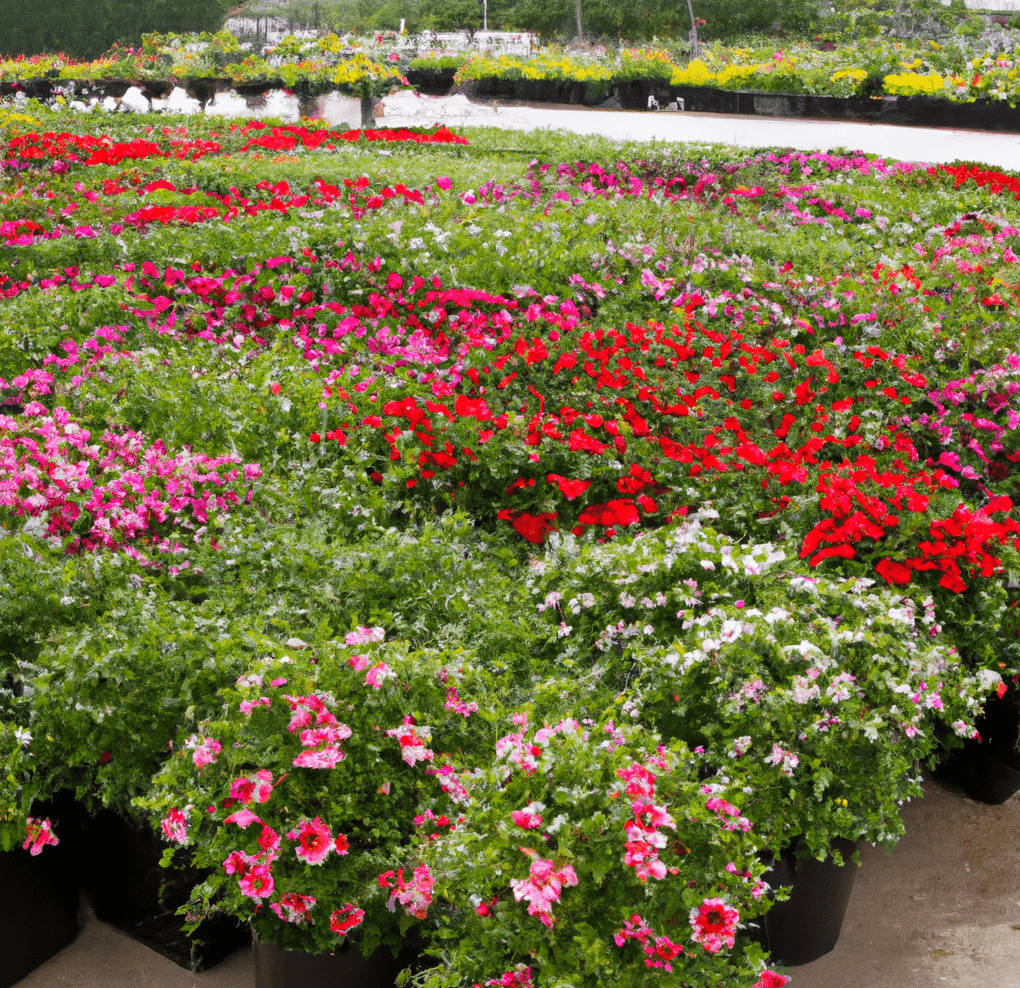
A master gardener program can offer helpful tools and guidance for managing pests and diseases in gardens. The use of cultural practices as well as the safe and efficient application of herbicides and other chemical controls may be covered in this. In a garden environment, herbs can also help reduce pests and diseases.
Specific Care for Annuals and Perennials
Both annuals and perennials require different maintenance and growing conditions in your yard. Here’s how to grow annuals and perennials as well as their specific care instructions:
- Annual plants develop quickly and are created to produce a large number of flowers in a single growing season. To thrive, they need plenty of sunlight, consistent watering, and well-drained soil. They also profit from routine fertilizer and deadheading to promote continual blooming because they have a brief lifespan.
- Perennials are long-lived plants that are meant to reappear every year. They can be planted in a variety of soil types and generally require less maintenance than annuals as long as the land is well-drained. Some perennial plants need a wintertime period of dormancy, during which they lose their leaves and go inactive.
Maintenance
Maintaining your garden on a regular basis is essential to keep it growing and healthy:
- Annuals and perennials should be routinely deadheaded to promote continuous blooming. In order to prevent the plant from using its energy to produce seeds and instead direct it toward growing more blossoms, spent flowers must be removed.
- Annual plants go through one growing season to complete their life cycle. You’ll need to replace them each year as they wither away to maintain your landscape looking vibrant.
- Plants known as perennials are those that grow year after year. In order to promote wholesome new growth, prune back dead or excessive growth in the fall or early spring.
- Regular trimming is essential to preserving the size and shape of shrubs. Before new growth starts, prune in late winter or early spring. Your plants will flourish and continue to provide beauty to your garden for many years with careful care.
Dividing
Plant division is a method for reviving perennials and encouraging robust growth in your garden:
- Annuals: Dividing annuals is not necessary because they normally finish their life cycle in one season. Simply replace them with brand-new plants every year.
- Perennials: Perennial plants have a tendency to get crowded out and lose their vigor over time. Perennials can benefit from division every two to three years to maintain and increase their general health.
- How Much to Divide: Perennial plants do best when divided in the early spring, just as new growth is starting, or in the fall, when the growing season has ended.
- How to Divide: Simply dig up the entire clump and carefully tear it apart into smaller portions to divide a plant, making sure each section has enough roots. Replant your garden, giving each division the proper amount of space for optimum growth. You may revitalize your garden and ensure that your perennials continue to flourish and enhance the attractiveness of your outdoor space by dividing your plants.
Overwintering
Now that you know how to grow annuals and perennials, some require overwintering especially if you live somewhere with severe winters. By overwintering them, you can make sure that your perennials come back each April vigorous and healthy, ready to produce an abundance of blossoms.
Perennials need to be well protected from the cold, wind, and snow in order to survive the winter:
- Either spread a layer of mulch or compost around the base of the plants or cover them with burlap or a frost blanket.
- To guarantee that the soil is moist and that the roots are protected throughout the winter, it is also crucial to water the plants thoroughly before the first hard frost.
- It could be necessary to move perennials that aren’t winter hardy in your location indoors. The plants can be dug up, potted, and then placed in a sunny area of your house or greenhouse to accomplish this.
Bottom Line: How to Grow Annuals and Perennials
Learning about how to grow annuals and perennials means that your garden can be filled with life and color often. It’s important to provide these plants with enough sunlight, water, and soil nutrients to ensure their success. It’s also essential to perform routine maintenance, such as deadheading or pruning blooming plants to encourage ongoing blooming and dividing perennials every two to three years to support healthy growth.
When deciding whether to plant, take into account the ideal planting period depending on the requirements of each species of plant. Consider mulching around your plants to retain moisture, control soil temperature, and discourage weeds as well as performing companion planting, which involves growing several plants next to one another for mutual benefit, to further enhance the health and beauty of your garden and look out for pests and illnesses.
How to Grow Annuals and Perennials FAQs
What are perennials and annuals?
Annual plants need to be replanted every year since they go through their whole life cycle in one growing season. Perennials are plants that may live for more than two years and usually come back every year, giving your garden shape and stability.
What benefits do you get from growing both annual and perennial plants?
Learning how to grow annuals and perennials means that you have annuals that produce copious amounts of blooms and provide your garden with a quick burst of color. They might be a wise choice if you want to experiment with various plants each year, are on a restricted budget or need a quick and easy way to add color.
On the other hand, perennials give your garden enduring structure and durability, making them a wise choice if you want to create a low-maintenance garden.
What factors should you take into account while deciding which plants to grow?
Take into account your goals as well as your garden’s growth conditions, such as the amount of sunlight and moisture it receives, the season you want your plants to bloom, and the local climate. For instance, learning how to grow bulb flowers will be different from other plants.
What preparation measures are involved in planting annuals and perennials?
Prior to planting, consider the plants’ needs for growth and the climate in your area. Second, make the soil ready by ensuring that it is well-drained and contains a balanced amount of nutrients. By adding compost or other organic waste, you can improve your soil’s fertility and structure. Last but not least, take the seasons into account and plant when the weather is nice and the soil is moist.
How can I pick the best annuals and perennials for my region and climate?
When choosing plants, consider the local growing conditions. Select plants with requirements for soil, water, and sunlight that are appropriate for your climate and location. Make sure the soil in your garden has the right nutrients and pH levels to support the growth of your plants by taking into account its exposure to light and shade as well as the type of soil you have.
What role does soil preparation play in gardening?
A healthy and productive garden requires careful soil preparation. Your plants’ root system and how well they’ll grow and bloom are determined by it. To make the soil ready, take out any weeds, rocks, or debris, amend the soil with compost, peat moss, or other organic material to improve its fertility and structure, and determine the pH level of the soil and make any necessary adjustments.
How frequently should I water my annual and perennial plants?
The type of plant and the environment it is growing in determine how frequently to water it. Because they have smaller root systems than perennials, annuals frequently need more frequent watering. It’s essential to know how much water each type of plant needs, and to keep the soil moist but not drenched. Although perennial plants are more drought-tolerant and have more developed root systems, they still need enough water for wholesome development and flowering.
Why is fertilizing my plants important?
Healthy plant growth, including that of annuals, perennials, and vegetables, depends on fertilization. During the growing season, it is advised to fertilize every 4 to 6 weeks and to use a fertilizer that is appropriate for the type of garden and the particular needs of the plants.
What is deadheading and why is it crucial for the plants in my garden?
Pruning is the practice of removing plants’ spent blooms in order to encourage prolific and ongoing blooming. Depending on the species, it may be less significant for perennial plants than it is for annual ones. The plant may concentrate on creating new blooms and keep a healthy and appealing appearance throughout the growing season by removing discarded flowers.
How can I keep pests and diseases under control in my garden?
Pest and disease management is crucial for maintaining natural resources and cutting costs in gardens and woods. Through a combination of preventative measures, such as routine plant monitoring, and suitable actions when necessary, effective pest and disease control can be achieved. Common measures include the application of chemical and organic techniques, such as the use of pesticides and organic techniques like companion planting.


